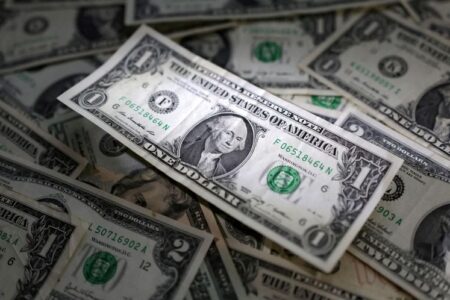Written by Ankur Banerjee
SINGAPORE (Reuters) – The dollar was strong on the last trading day of the year, poised for strong gains in 2024 against most currencies as investors brace for smaller U.S. interest rate cuts and the policies of the incoming Trump administration.
The rise of the dollar, supported by rising Treasury yields, pushed the yen towards its lowest levels since July, when Japanese authorities last intervened. On Tuesday, it was at 157.02 to the dollar, on track to fall 10% in 2024, the fourth straight year of decline against the dollar.
Japanese markets remain closed for the rest of the week, and with most markets closed on Wednesday for the New Year holiday, trading volumes are likely to be very thin.
That left the dollar index, which measures the greenback against six other major units, at 108.06, not far from the two-year high it reached this month. The index rose 6.6% in 2024 as traders reduced bets on big interest rate cuts next year.
The Fed shocked markets earlier this month when it cut its 2025 interest rate forecast to 50 basis points of cuts, from 100 basis points, fearing stubbornly high inflation.
Although strategists at Goldman Sachs expect three rate cuts from the Fed next year, they are confident that inflation will still trend lower.
“We view the risks to interest rates from the policies of the second Trump administration to be more two-sided than widely assumed,” they said in a note.
The dollar also received support from expectations that President-elect Donald Trump’s policies of easing regulations, cutting taxes, increasing tariffs, and tightening immigration will be pro-growth, inflationary, and keep US revenues high.
“Although the markets’ initial reaction to Trump’s re-election to the White House in November was jubilant, they now appear to be analyzing the incoming administration’s priorities more carefully,” said Gary Duggan, CEO of the Global CIO Office.
The dollar casts a shadow
The prospect of US interest rates remaining high for longer has weighed on most other currencies, especially those in emerging markets, as traders are concerned about the stark difference in interest rates between the US and other economies.
The euro is headed for a 5.7% decline against the dollar this year, as traders expect the European Central Bank to be more aggressive in its cuts than the Federal Reserve. The single currency stabilized on Tuesday at $1.04025, but remained close to the two-year low of $1.03315 that it touched in November.
In what turned out to be another turbulent year, the yen broke to multi-decade lows in late April and then again in early July, falling to 161.96 yen to the dollar, triggering bouts of intervention by Tokyo.
It then reached a 14-month high of 139.58 in September before giving up those gains and is now back near 157, with traders watching for signs of intervention from Tokyo.
The Bank of Japan kept interest rates steady at a meeting this month, and Governor Kazuo Ueda said the central bank was scrutinizing more data on next year’s wage momentum and awaiting clarity on the new US administration’s economic policies.
A Reuters poll earlier this month showed the Bank of Japan could raise interest rates by the end of March and interest rate markets expect only a 41% chance of a rate hike in January.
The British pound was little changed at $1.2545 in early trading, and is on track to decline by 1% in 2024.
The risk-sensitive Australian and New Zealand dollars were hesitant on the day, remaining near two-year lows. The Australian dollar last achieved US$0.62155 and is set to fall 8.7% this year, its weakest annual performance since 2018.
The New Zealand dollar reached $0.5637 and is expected to decline by about 11% in 2024, its weakest performance since 2015.
In cryptocurrencies, Bitcoin rose to $92,370, well below the record high of $108,379.28 it touched on December 17. The world’s most popular and largest cryptocurrency is expected to see a massive 117% surge this year.
(Reporting by Ankur Banerjee in Singapore; Editing by Sam Holmes)
